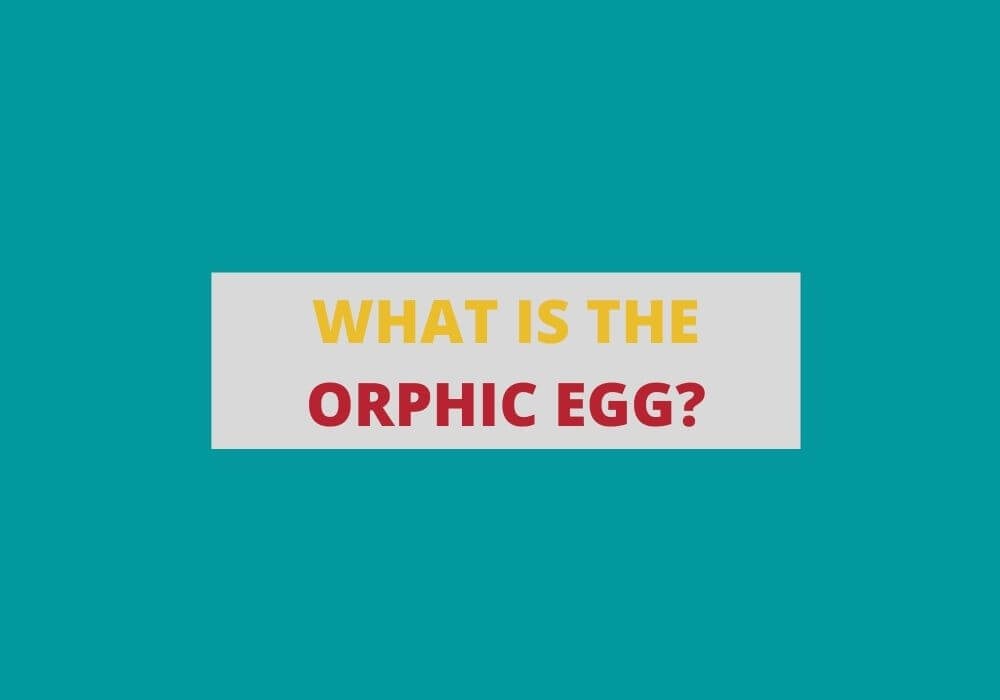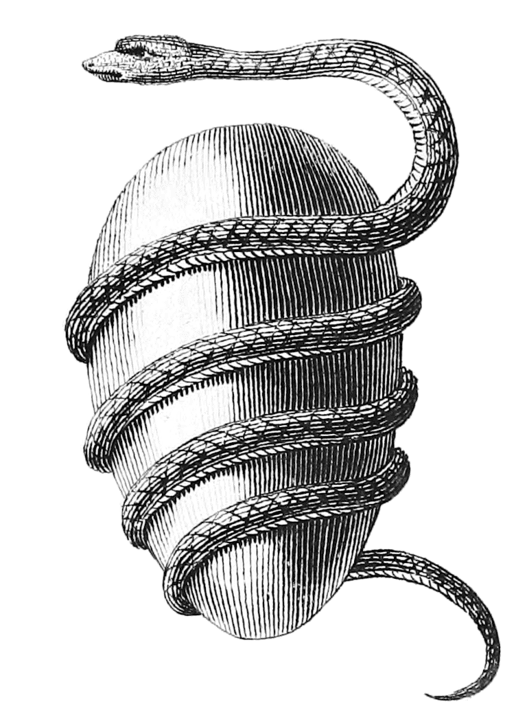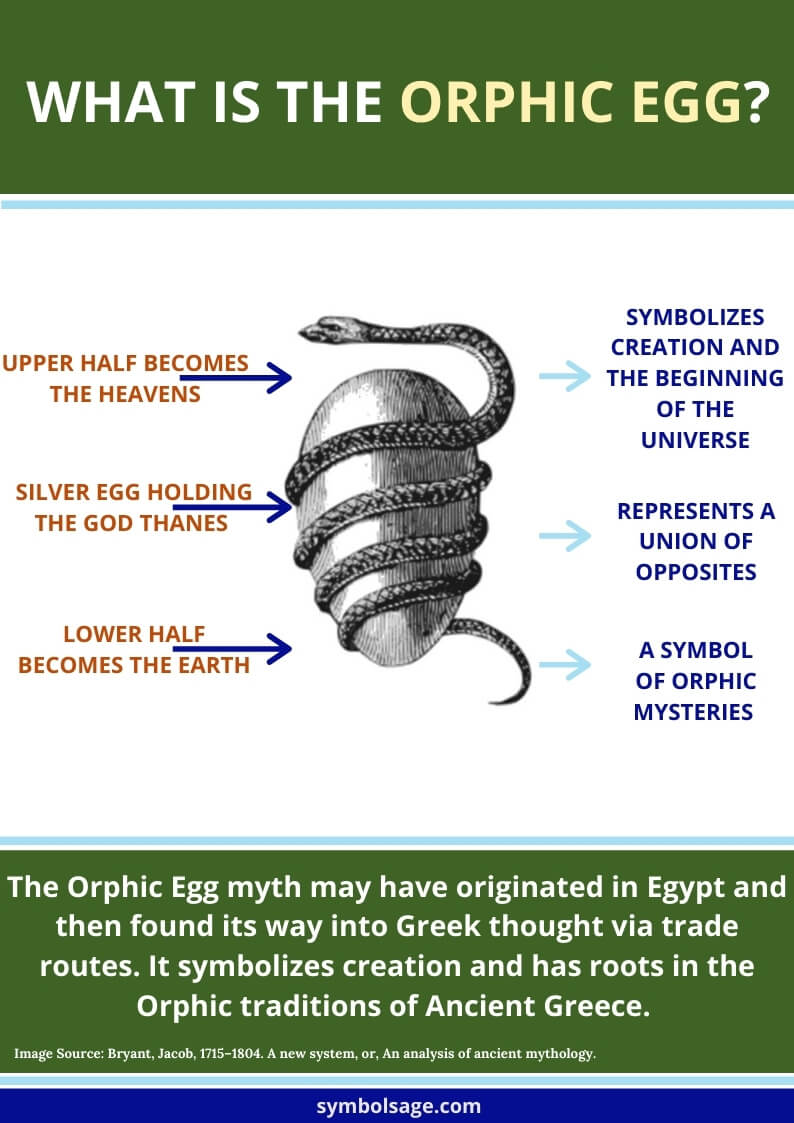
Table of Contents
The cosmic egg is a common theme in the creation myths of many cultures. Often depicted as an egg entwined by a serpent, the Orphic Egg is found in ancient Greek tradition. Here’s a closer look into the mythology behind it and its significance today.
History of the Orphic Egg
At the beginning of the 6th century B.C.E., the Greeks started to honor various semi-mythical figures, such as Orpheus, a semi-legendary musician, poet, and prophet. While the records state that Aristotle believed he never existed, ancient writers were convinced that he was a real person who had lived before the Trojan War, in Thrace.

The Orphic Egg is named after Orpheus and is based on the beliefs and teachings of Orphism that the universe originated from a silver egg. It is believed that Chronos, the personification of time, created the silver egg of the universe, which hatched the primeval deity Phanes (also called as Protogonus), who in turn created the other gods.
The Orphic Hymns states that Phanes is born from an egg and has the glittering golden wings. In the myth, the egg splits and the upper portion becomes the heavens and the lower portion becomes the earth. The name Phanes comes from the Greek phainein “to bring light” and phainesthai “to shine,” and is believed to be the source of light and intelligence for the cosmos.
According to some historians, the symbology of the serpent and egg likely originated from the Egyptians’ belief of the cosmic egg and then passed down to the Phoenicians of Crete, which gave rise to other mystical symbols in different cultures. Also, Egyptian myths likely influenced Greek myths, especially during the 6th century when Greek merchants frequently visited the country.
During the Renaissance period, poets, philosophers, and musicians brought back the traditions of ancient Greece, including the mythical Orphic Egg, which influenced the artistic expression in music, sculpture, painting, teachings, and religions of the time.
Symbolic Meaning of the Orphic Egg
The Orphic Egg represents the cosmos in its most abstract conception. Here are some of the interpretations of the symbol:
- A Symbol of Creation – In terms of cosmogony, the Orphic Egg was the beginning of the universe, as if it were a kind of Big Bang Theory. In Greek mythology and Orphic tradition, it was the source of Phanes, the deity of procreation and life. He is also called Protogonos, which translates to “first-born.”
- The Union of Opposites – The Orphic Egg is described as having both male and female elements, which made Phanes, the god who emerged from it characterized as both male and female. As a god of duality, he had the ability to give birth to the gods and create order in the universe.
- A Representation of Orphic Mysteries – The Orphic Egg is based on Orphism, an ancient Greek religion associated with literature. According to An Analysis of Ancient Mythology, the Orphic Egg represents the “the soul of the philosopher; the serpent, the Mysteries.” In philosophy, it takes some points in the Orphic Hymns and Plato’s writings.

Orphic Egg in Modern Times
The mysteries of Orphism have continued to influence the world to the present day. The motif can be seen in decorative arts and tattoo designs, as well as in some fashion pieces like graphic shirts and caps. It’s also popular in jewelry, from earrings to necklaces and signet rings. Some designs feature the egg in a form of pearl or gemstone, surrounded by a snake motif.
In Brief
The belief in the cosmic egg has been handed down to us from antiquity as a symbol of creation. Today, the Orphic egg continues to inspire spirituality and arts in our modern times.








